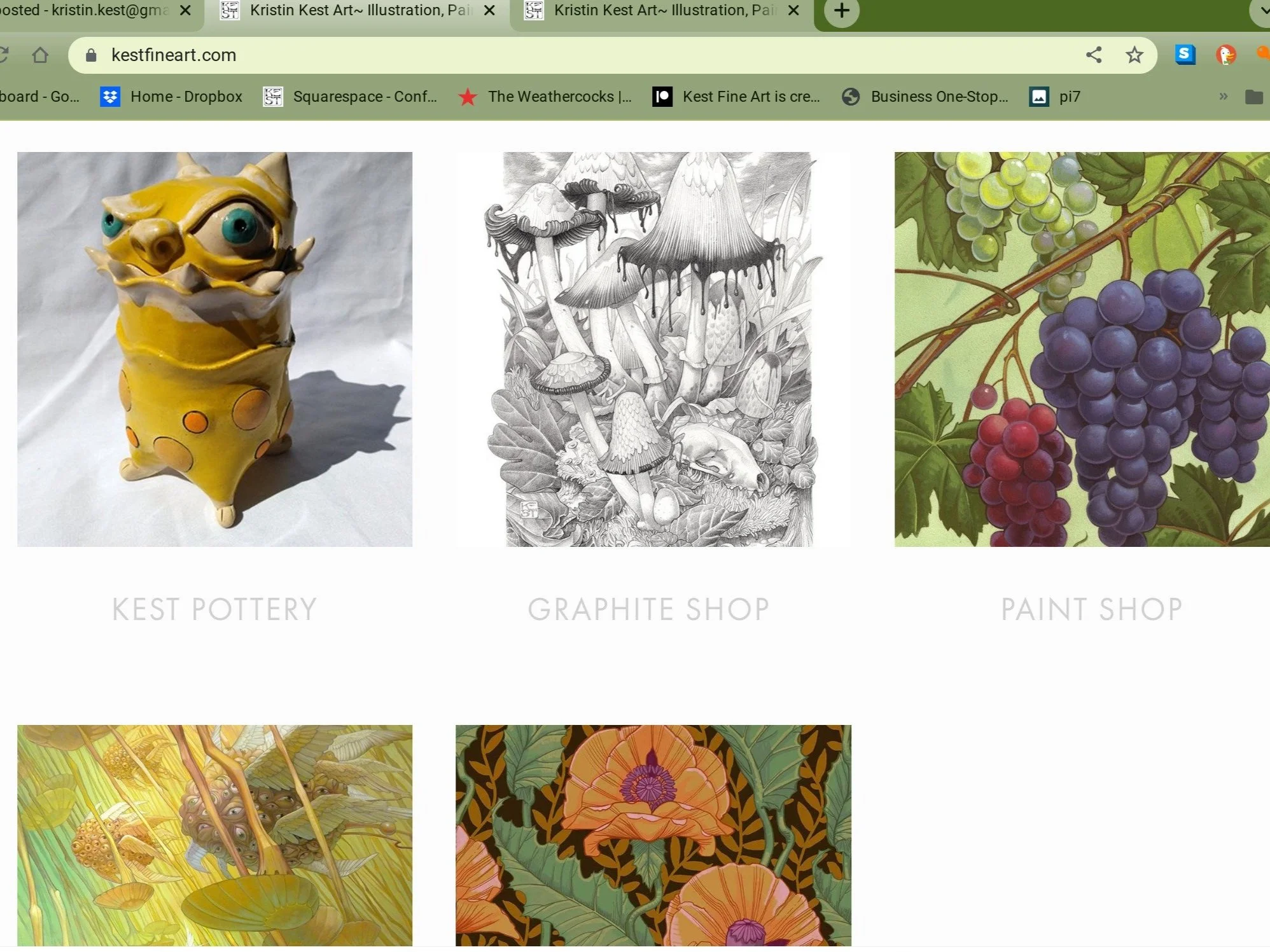I’ve had some sort of dedicated art website since 2000. The first one was a basic HTML single-page on my college’s campus server and I experimented with the design for a few years until I set up a templated site on Squarespace and bought my first domain. So very fancy. Until very recently, I never really concerned myself with SEO, page loading speeds, font hierarchies, backlinks, etc. Back then, I had a wonderful NYC agent that was taking care of getting me commissions, and because the agency had a proper business site for clients, my illustration site could be more like a luxury— a lagniappe for anyone curious about other illustration stuff I might be doing.
My earnest website hosted a ton of artwork in 2 decades and during that time I learned a lot about how to best present my artwork and user interface. It’s gradually shifted from being an elaborate business card to a serious storefront because the world changed — the internet broke all the locks on the doors of the gatekeepers. But having your own storefront brings a responsibility to make sure your website functions well for anyone using it, reliably brings you clients, and provides useful information.
But why would I do all this extra work AND pay to keep my website going when there are all of the easy storefront opportunities out there today? In 2020 it was so easy and cheap to upload images into Etsy and start a pottery shop there. And I could sell my work and or prints on any number of online galleries. Big “handmade arts” stores like Shopify offer artists a little subdomain space so why would I need to go to all the trouble and expense to buy my own domain, a webhosted platform, a business plan with a domain name email, etc.? Why wouldn’t I use many of the free social media accounts or platforms like Patreon to drum up business and monetize my work?
Well, for one: I get to keep all the profits. On top of the taxes, Etsy takes about 20% of the total sales. When I crunched the numbers for the past 2 years, it’s more economical in the long run if I spend money on a business website plan than to continue to use Etsy. But it’s not very economical if my sales there are under $1K /year.
On high-end sites like Saatchi, the commission fee is 35% like any physical gallery so I have to jack up the price by a third to adjust for the loss and cross my fingers that a potential buyer isn’t looking for a bargain. On my own site, I can charge the appropriate market value for my work.
And then there’s branding. People shopping in a marketplace may not remember the name of my shop but they do remember they bought it on Ebay, Amazon, or Etsy. Having my own storefront means that I can control how my online space looks, how it interacts with potential patrons, how it functions to provide the aesthetic experience I intend it for my clients. Keep in mind that Etsy, Saatchi, et al, do not care if someone buys your art or the next artist’s work; they only care that art is sold from their retailer platform and that they make money from the sale of somebody’s art. That’s why when you’re on those sites, you’ll see all kinds of art next to the others jockeying for your attention, similar styles or colors or categories of art that are selected just for you by the algorithm. And some sites say they’re a platform for “handmade arts” but then sadly, you’ll see manufactured goods sitting side-by-side next to your art and undercutting your prices. On any shop platform other than my own, I have to play by their rules about not driving any business to another website and I have to roll with it when they change their algorithms.
One of my biggest reasons for having an art website— and it’s been this from the start— is that I feel more professional by having one. By maintaining a professional-looking website that hosts my life’s work as it evolves and grows is a commitment I make every year to my career. It’s an ongoing investment in my future as an artist and it tells the world, I’m here for the long haul and I take what I do seriously.
~K2
